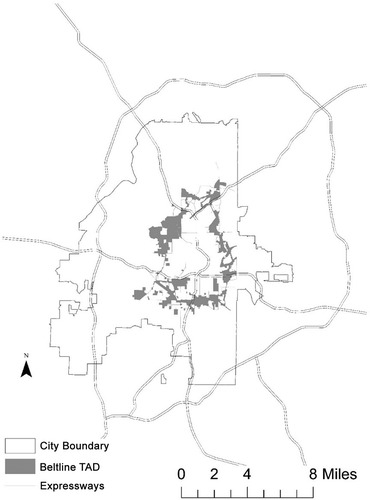Connecting Communities
The railroads built in the 1800’s encouraged the development of multiple neighborhoods outside of central Atlanta, including Howell Station, Cabbagetown, and Edgewood. When the railroads were eventually abandoned, these neighborhoods began to decline as well. There was not continuous jobs flowing in, so work began more difficult. This caused the communities to become more isolated and separated from each other and central Atlanta. Frederick Law Olmsted was the original inspiration for this project of reconnecting these neighborhoods and creating a park for the public. Olmsted guided the creators of this project by advising them to avoid predicting the potential for a park “by itself” but rather as a part of the whole community. He also created this idea that the Beltline is a “string of recreation jewels connected by a greenway”. His inspiration led to the loop around Atlanta, that connects 46 nearby neighborhoods, increasing their property value and providing them with a successful public park. Data has shown that from 2011 to 2015, property values have rose between 17.9 percent and 26.6 percent for homes within half a mile from the Beltline (Immergluck). This would be the first public park in America to combine an entire system of bike paths, trolleys, and green space that surrounds a major city, while connecting smaller towns. Not only does the Beltline make link together communities, but it also connects to MARTA, which is a staple of Atlanta as well (Garvin). This allows people who don’t live along the tracks to have accessibility to the Beltline for whichever leisure activity they want. Along with the possible physical activities, the Beltline has provided an outlet for artists to create sculptures and murals along the pathway, and also business (such as restaurants or shops) to open and create more jobs. The Beltline has be a symbol of a turning point in the development of Atlanta from a great city, to a great city with a unique park.
Garvin, Alex. The Beltline Emerald Neckland: Atlanta's New Public Realm. The Trust for Public Land, 14 Dec. 2004.
Immergluck, Dan. Sustainable for Whom? Green Urban Development, Environmental Gentrification, and the Atlanta Beltline. Urban Geography, 22 Mar. 2017, www-tandfonline-com.proxy-remote.galib.uga.edu/doi/full/10.1080/02723638.2017.1360041?scroll=top&needAccess=true.
